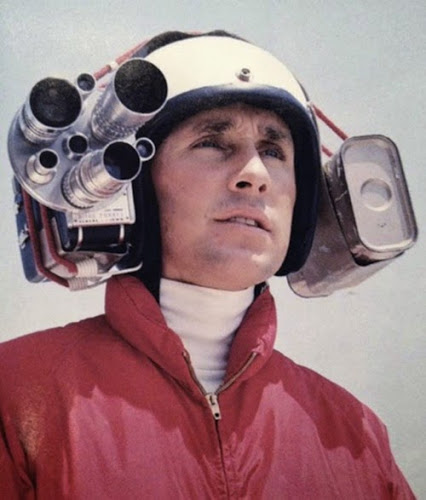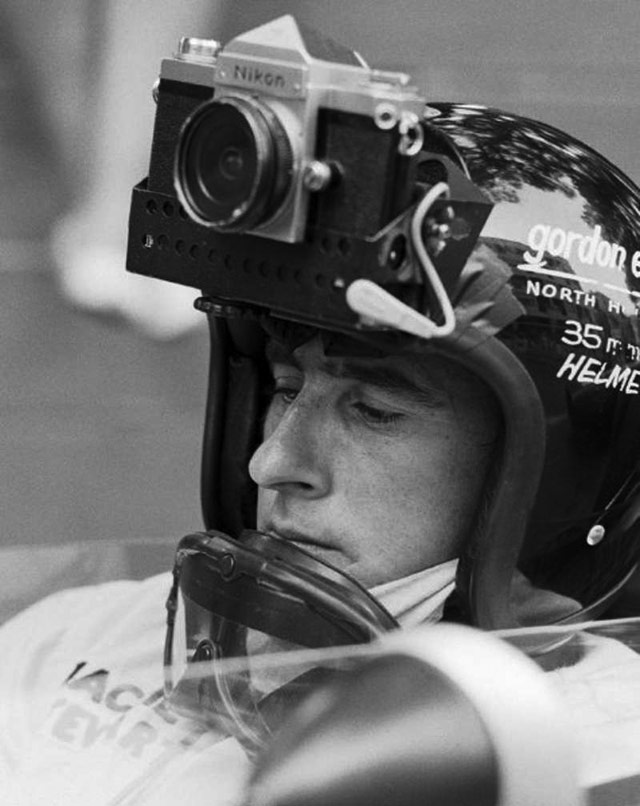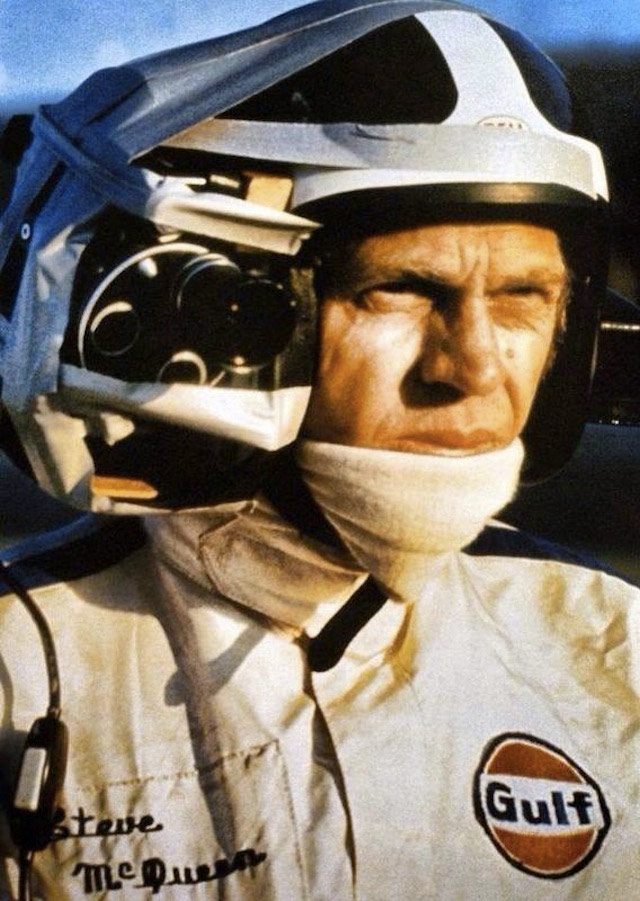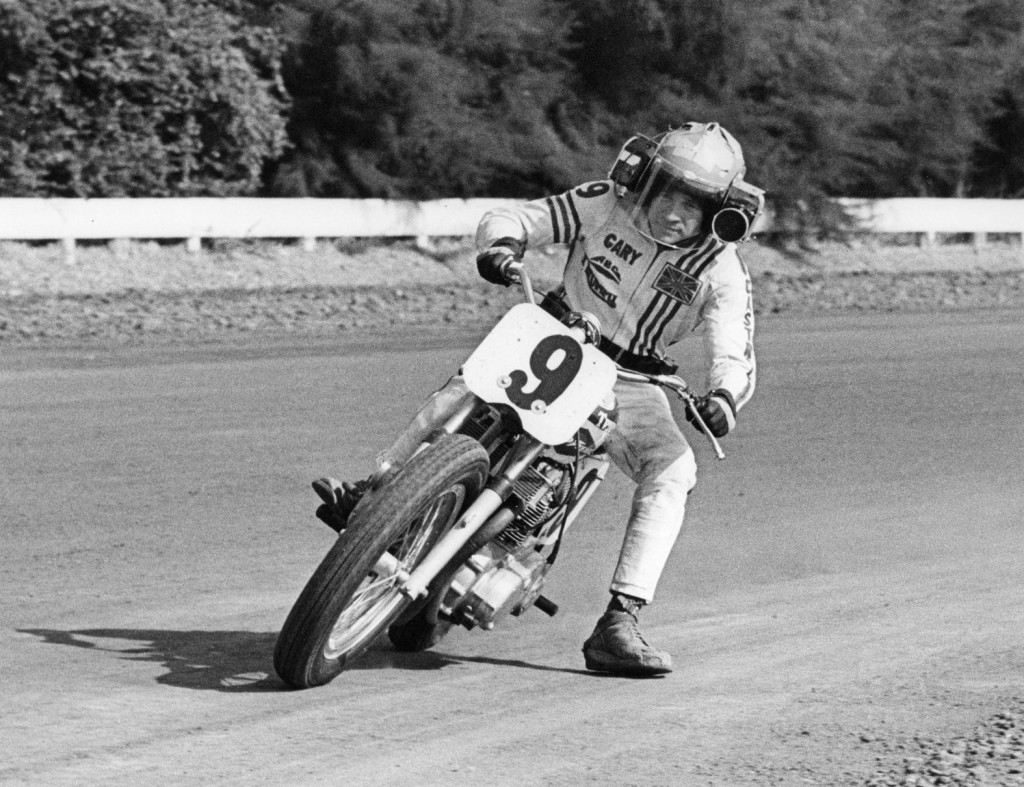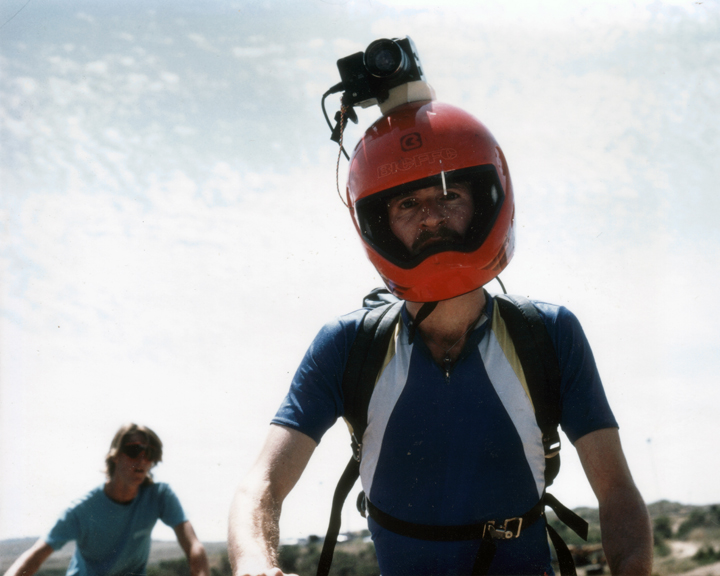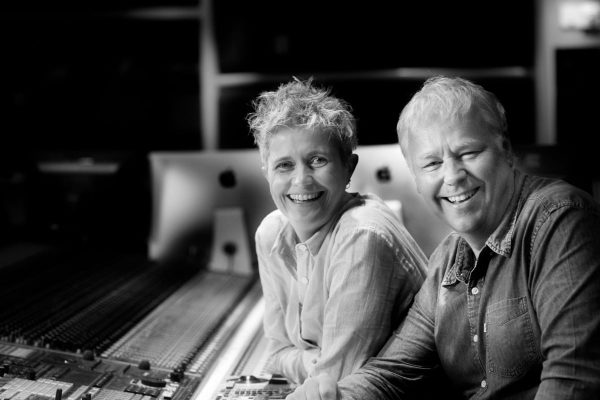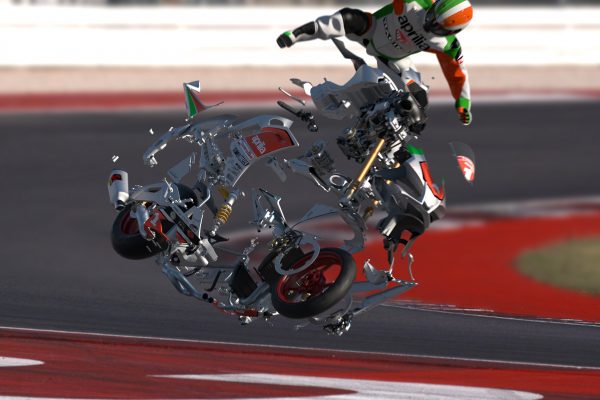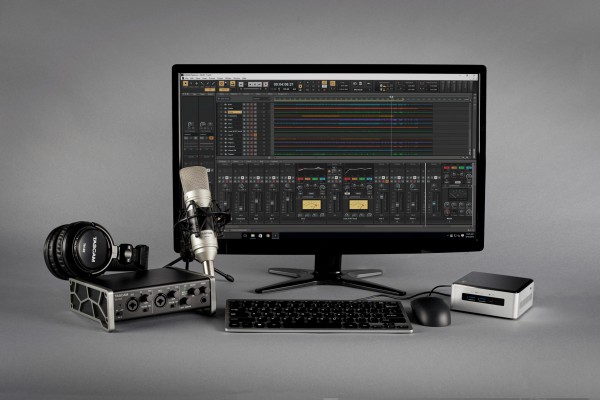Sports cinematography has come along way since the preceding days of digital video. Despite this, one thing still remains true that in order to get into the heart of the action a POV shot is king. But to get the POV, you need to mount the camera right on the helmet of the sportsman. Of course, video cameras weren’t always the snazzy little numbers they have these days, back in the old days it meant attaching a much larger film camera to a helmet (like the image above using a couple of occy straps and a battery pack as a counter weight).
Story by Nicole Boyd
GoPro opened up a world of sports shooting, seriously, do a youtube search, you’ll see what we mean. These days helmet cams are commonly used from the everyday cyclist (as an insurance measure), to riding the greatest surf in the world or base jumping from city buildings – all shot in HD and held securely in place with a GoPro helmet mount. But in the days before digital, unique rigs had to be made and they’re creativity is glorious to behold.
Here now are some of the funniest, craziest and outright bizarre ways in which sports cinematographers have shot the action through the years.
Circa 1960 – 1970
In the early 60s, eager television producers began to branch out into action-adventure genres as a low-budget way to produce content for prime-time. Shows such as Sea Hunt (scuba-diving)and Whirlybirds (helicoptering) gained popularity with little overheads for producers. One such show Ripcord featured a team of high-flying, crime-fighting parachutists, which ran for two seasons from 1961 – 1963. At the time freefall cinematography was still in it’s infancy, so Bob Sinclair and Tom Ryan (the Ripcord camera department) had their work cut out for them. The duo created, hidden chutes, breakaway clothing, helmet cams and wing suits (so cameramen could adjust their speed of fall), innovating the genre in the process. Sinclair began shooting the freefall footage with hand-held cameras, he then tried gyro-stabilized cameras but found the footage still difficult for audiences, eventually creating the custom-fitted fiberglass mount pictured below (source).
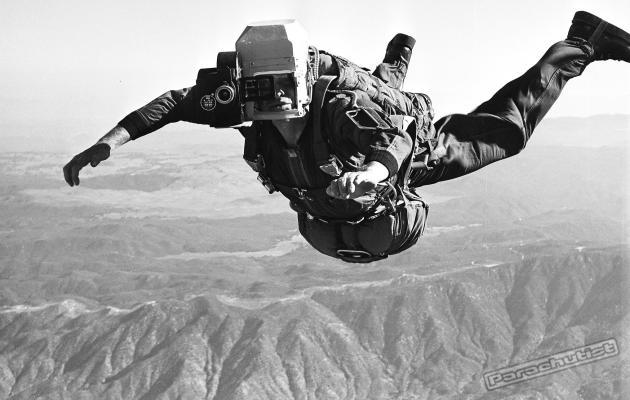
Bob Sinclair jumps an experimental camera setup in 1961 for one of the early episodes of “Ripcord.” Photo by Milt Platt.
Formula One motor racing, also looking to bring the excitement of the race to viewers at home began experimenting with their own custom made helmet cams. Pictured below is legendary F1 driver Jackie Stewart wearing a stills-only camera at the Monaco Grand Prix in 1966, altho he didn’t wear it during the actual race.
Circa 1970 – 1980
In the early 70s the motorsports racing meant big business for studios, films such as Le Mans(1971) and The Last American Hero(1973) created cult followings and a love of the genre for many. In order to get to the heart of the story, filmmakers came up with some ingenious ways of shooting their POVs. For the previously mentioned film Le Mans (directed by Lee H. Katzin and starring Steve McQueen) this meant using gaffa tape (a filmmakers best friend) to secure the camera to McQueens helmet. It’s no surprise McQueens character then went on to say “When you’re racing, it… it’s life. Anything that happens before or after… is just waiting”. No-one makes gaffa tape look as cool (Cher doesn’t count).
Academy Award nominated film On Any Sunday (1971) directed by Bruce Brown and also starring Steve McQueen, included POV footage during a number of motorcycle races. This meant finding a helmet cam that would work with multiple riders. They finally decided on the rig pictured below, however, it was still quite bulky and difficult for the riders to wear. Click here to see some of the footage from the helmet cam, it begins around the 0:48 seconds mark.
This year will also see the release of a follow up movie titled On Any Sunday, The Next Chapter directed by Dana Brown (son of Bruce), you can see the teaser trailer here.
SONY seeing a market for light-weight portable film cameras created a 16mm Black & White portable film camera, connected to a wearable reel-to-reel tape deck and battery pack. The entire pack weighed 20 pounds. Stuntman and sky diver Gary Patmor mounted the camera permanently to his helmet (pictured below in 1972). Patmor also doubled for Steve McQueen on film and for many others, including Ben Gazzara, Lloyd Bridges, Robert Vaughn, James Franciscus, Vic Morrow and Cliff Robertson (source).
Circa 1980 – 1990s
According to Wikipedia helmet cams began in the 80s, despite being used beforehand they did come into their own during the 80s. The online encyclopedia states that the first documented use of a helmet cam was in 1986 for the Nissan USGP 500 World Championship at Carlsbad Raceway in California. The rig was created by Aerial Video Systems (AVS) who mounted a Canon CI-10 camera mounted to the side of Dick Garcia‘s helmet (pictured below). During the race, AVS transmitted the camera footage via portable microwave to the ABC broadcast truck, which was then edited into the live broadcast, the results were a first for televised live racing.
In 1987 Mark Schulze (pictured below) and his wife Patty Mooney filmed cycling guides for retail video sales, in an early prototype of the GoPro/Youtube videos we all see today. You can see the similarity of their custom made helmet cam to many of the current rigs available. Schulze used one of the first type of CMOS chip cameras (made by RCA) and connected the camera to a VCR that he recorded onto carried in his backpack (source).
Circa 1990 – Today
Cinematic technology has advanced leaps and bounds in the last twenty years and with the invent of light-weight, smaller digital cameras we’ve seen action cameras come and go, although none have impacted the market like the GoPro; now a staple of sports shooting. Despite this, sometimes people want a little more than the kinds of footage offered by the GoPro, or even more than just the one GoPro, here’s where the humble DIY helmet cam shines, in all it’s hilarity.
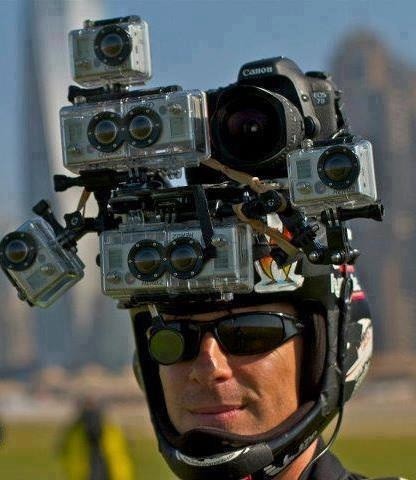
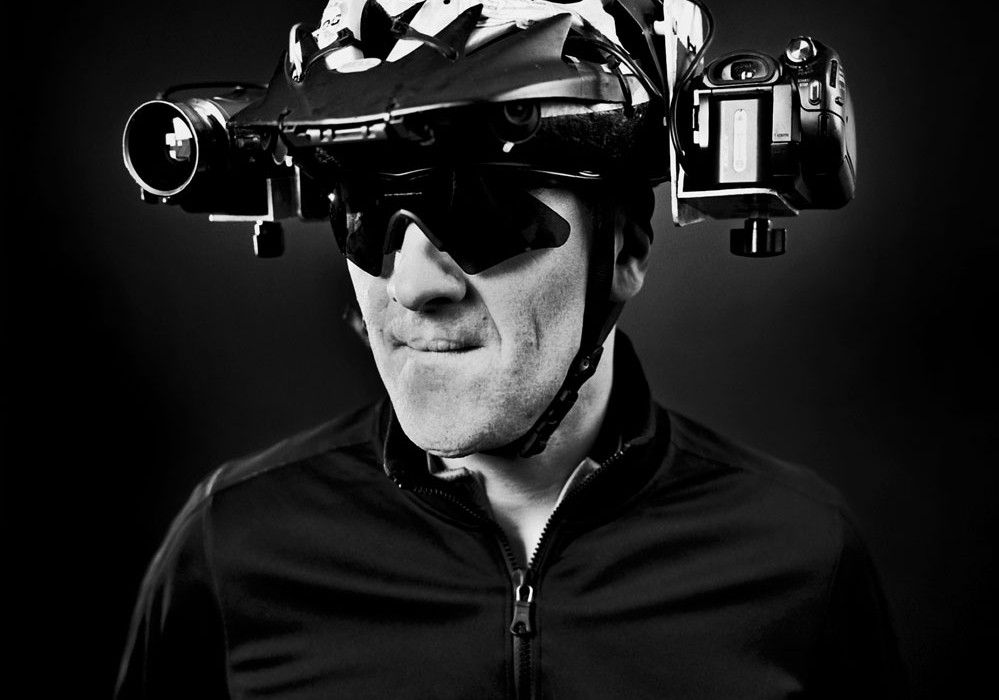

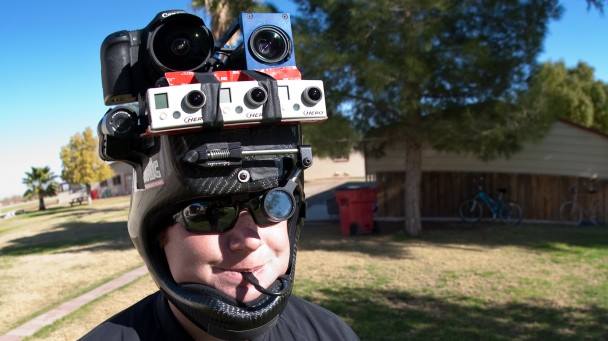

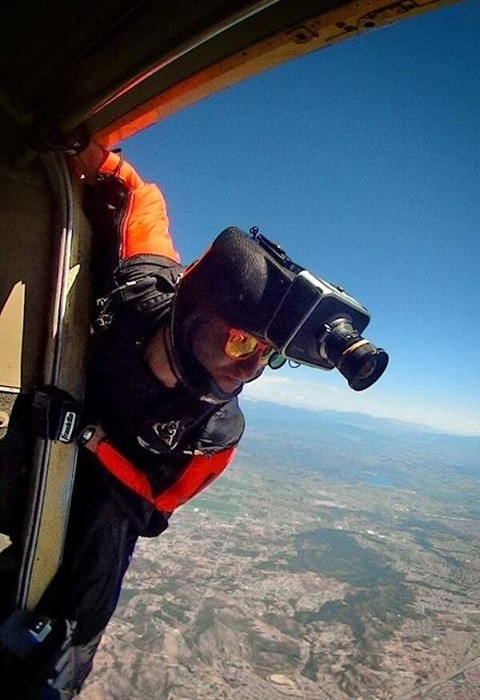
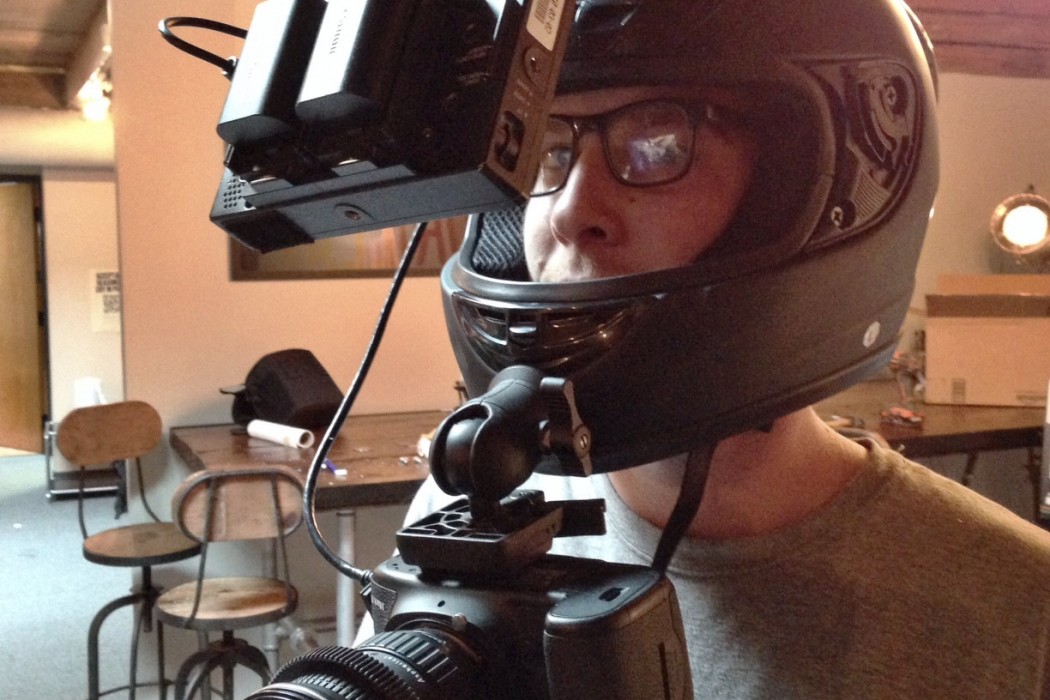

BTS Video on the custom helmet cam rig made for the NFL.

